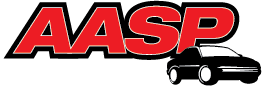1.23.23 – Knowing how important it is to start the year off with one’s house in order, the Alliance of Automotive Service Providers of New Jersey (AASP/NJ) set out to make sure its members have the best information available on how to be OSHA compliant by inviting Bob Plett of American Compliance Systems to review requirements during its January membership meeting, held virtually.
Keeping a collision repair business afloat in this challenging and ever-changing industry is complicated enough without the stress of OSHA or other compliance handlers surprisingly knocking on your shop’s door. Fines and penalties can be quite costly and could really send a shop into serious financial debt. But these potential visits don’t have to be a threat if one has all their records in check, according to Plett.
“Something as simple as not having a doctor’s sign-off on mask requirements for a painter can be a violation,” AASP/NJ President Jerry McNee said about how eye-opening an OSHA visit can be, suggesting that planning can really go a long way.
OSHA is most likely to pay shops a visit due to an employee complaint, Plett explained. First contact may be via simple email or call, and if the claim is found false, it all ends right there…but if the complainant went on the record by name and claimed required information wasn’t received or spoke of other possible actions which could mean a violation, an inspection will follow.
When OSHA does step through that door, shops should be prepared. “Have all records ready and in hand if you are under inspection. These are the things needed for compliance,” advised Plett.
Some of the top citations for auto repair shops involve permit confined space (such as pits, manholes, etc.), respiratory protection, machine guarding/grinders, hazard communication, electrical safety and thensome.
Penalties can start at $15,625 and only increase from there. The good news, according to Plett, is that fines can be substantially reduced if one is cooperative and works to quickly comply and deliver the requested information. He told shop owners to keep in mind that repeating a citation in the same category is likely to lead to repeat inspections and fines that can amount to three times as much.
Plett shared five steps toward compliance, encouraging attendees to conduct hazard evaluations, develop safety plans, complete required training, monitor and maintain compliance programs and keep required records.
“The more you are reading, planning, documenting and training, the easier it will go,” Plett stressed.
For more information on AASP/NJ and upcoming events, please visit aaspnj.org.
